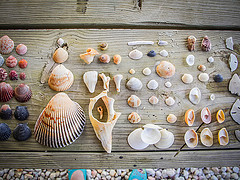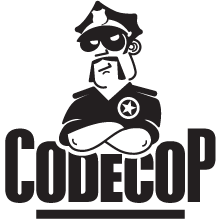Over the years I did similar exercises and started to perform formal katas somewhere in 2009/2010. I used them for personal practise and for demo, e.g. to show students how TDD could look like as part of my QA guest lecture. At my first Code Retreat I noticed that pairing on a code kata gave me more insights, so I looked for people who would spend some time with me practising, usually remotely.
Tip: Keep the source of your katas (or at least a record)
I do keep the code of my katas. Even at Code Retreats where you are supposed to delete your code, I manage to recover the source from local history or version control. When I use online tools like Cyber-Dojo, I write down the session id and come back later to recover the code. (I know I am a bad person. ;-)
At the time of writing, I have worked on more than 230 code katas resulting in almost 300 sessions of personal or paired practise. (In remote katas we sometimes tackle larger problems and then work more than one session on it.) I have a lot of kata sources and they are all over my hard-disc. I managed to collect some of them in dedicated repositories, one for each programming language, but many are in their own projects, or even mixed up with other code in early "learning" repositories. It is a mess. (Probably it does not matter, but it is a mess nevertheless.)
 Tip: Collect all your katas in one place
Tip: Collect all your katas in one placeIn her article about code katas, Iris Classon gave some practical advice regarding katas, e.g. to collect them all in one place, to be able to compare solutions. I really liked the idea and recently I found some time to collect my katas in one place - or so I thought.
Tip: Name your code katas consistently, even across languages
I faced some problems. First not all my katas followed the same naming conventions, e.g.
prime_factors and primefactors were good enough for me, but not for a unified collection. Most of my katas were in version control and I did not want to rename or move large numbers of files, because I would lose history. (Again history did not matter for katas, especially as I never looked at it - but I was not able to drop practises I followed every day.)Tip: Put your katas in kata-only repositories
I managed to extract katas out of mixed repositories using
hg convert --filemap with a filemap of simple inclusions, preserving the whole history. I also fixed some inconsistent kata folders with a filemap of renames. But hg convert created new, unrelated repositories and I had to drop and recreate some of my repos.My vision was to place the same katas regardless of language near one another, so I would be able to count and compare them. But I did not find a way to do that with all the different languages and keeping the code working. How would I combine Java, NodeJS, Ruby and Scala sources in a consistent way, other than separating them by source folder, which they already were. I failed to merge all my katas and looked for alternatives.
In the end I created a little script that would search my hard-disc for katas, normalise their names and collect them in a single place. I grouped the sources first by kata name and then by date. The programming language did not seem that important for a combined collection and ended up after the date, resulting in the name pattern
[name of kata]/[ISO date] [- optional comment] ([programming language]). The whole collection looked like:All Katas
|-- bankocr
|-- bowlinggame
|-- 20120924 (Java)
`-- BowlingTest.java
|-- 20130307 (Scala)
`-- BowlingGameSuite.scala
|-- 20130414 (JavaScript)
`-- BowlingGameSpec.js
`-- ...
|-- fizzbuzz
`-- ...Tip: Compare your katasIn the beginning I believed that the code of the kata, the final product, did not matter, that only the process of getting there, the practise, was important. That was the reason why people published kata-casts, because the final code did not represent much. Later I discovered that looking at code of a problem that I knew well, and reading comments regarding that code, also had value. So I searched the web for source code and recordings of the katas I had done. I planned to look at them and to compare them with my solutions and to learn from them even more. Of course I never had the time to do this.
But now I can see all exercises I ever did at one glance. Now I have the opportunity to compare my solutions across time and languages. This is the perfect time to include my bookmarks of katas as well. This is going to be interesting because I never had a second look at my katas before.








No comments:
Post a Comment